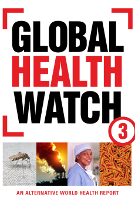6.4 Draft action plan for the prevention of avoidable blindness and visual impairment 2014–2019
Key documents
- Draft action plan for the prevention of avoidable blindness and visual impairment 2014–2019 Universal eye health: a global action plan 2014–2019 (EB132/9)
Secretariat note
In decision EB130(1), the Executive Board requested the Director-General to develop a new action plan for the prevention of avoidable blindness and visual impairment for the period 2014–2019. The draft action plan was developed in close consultation with Member States, United Nations agencies, funds and programmes and international partners. The Board is invited to consider the draft action plan.
PHM comment pre-EB
Report of discussion
This agenda item was opened by Mexico that, along with Saudi Arabia and Costa Rica proposed a draft resolution on avoiding blindness to be considered by the next World Health Assembly in May 2013. The resolution EB132.R1 Towards universal eye health: a global action plan 2014-2019, which was co-sponsored by Australia and the United States of America, aims to support the five-years action plan drafted in consultation with Member States, United Nations agencies, funds and programmes and international partners and brought to the EB for its consideration.
Several Member States took the floor expressing their support and appreciation for the action plan and their commitment to implementing it through national actions.
Seychelles, speaking on behalf of the African Region, declared that around 9 million of people in Africa are affected by blindness – a number is likely to increase by 2020 – and recalled that many countries in the continent had already put in place national action plans and other public health measures.
Particular emphasis was given to cataract which represents a common growing problem due to the increasing of the elderly population. In this regard, the Cuban delegate recalled a project called “Operation Miracle”, a broad humanitarian campaign launched in 2004 by Cuban president Fidel Castro that consists in operating for free those low-income Latin Americans who suffer from cataracts and other eye diseases.
Myanmar and Yemen, among others, while thanking WHO requested for its capacity building and technical support in implementing the action plan in their own countries.
Italy confirmed its commitment to the issue and reminded that, despite the good achievements made in the last years, the poor and most vulnerable communities remains affected by preventable blindness conditions. It also expressed concern on trachoma, onchocerciasis and rehabilitation management.
After Member States, the chair gave the floor to Dr Chestenov, the Assistant Director-General on noncommunicable diseases and mental health who pointed out the need to ensure a primary health care approach to avoidable blindness and to approve, as soon as possible, the action plan to allow it to become reality. Dr Chestenov was backed by the Director-General that focused on the importance of preventing eye diseases from the childhood and ensuring an affordable eye care surgery as did by China, Cuba and other countries. She concluded the session by reiterating her determination on pushing this agenda item forward in next years.
The proposed resolution was approved with some amendments made by Lithuania on behalf of EU.




